ADVENTAS
ADVENT
KUCIOS
KUCIOS
Kucios - gruodžio 24 d., Kaledu išvakarese švenciama švente. Dabar tai paprastai yra šeimos ar artimiausiu draugu vakariene. Kucios budavo didele švente prie apeiginio stalo, lydima apeigu, burtu, auku. Prieš Kucias žmones stengesi užbaigti darbus. Kuciu diena buvo draudžiama malti, skaldyti malkas, kulti, nes triukšma sukeliantys darbai busima vasara sukelia audringus debesis su krušomis. Pasiruoše šventems žmones pagal apeigas prausdavosi.
Kucias pradedavo valgyti užtekejus Vakarinei žvaigždei. Stala apdedavo šienu, dali jo dedavo ir pastalen. Ant šieno klodavo staltiese ir statydavo patiekalus. Pastatydavo žvakiu, kartais - nekulta rugiu peda, pavoždavo po puodu akmeni. Prie stalo pakviesdavo kaiminysteje esancius bešeimius, samdinius. Prieš valgydami visi atsistodavo. Vyriausiasis garsiai melsdavosi, o paskui visi vieni kitiems linkedavo sveikatos, laimes. Pirmiausia valgydavo kucia. Dalis maisto budavo atiduodama velems, paaukojama dievams. Per Kucias taip pat kurendavo ugni, degindavo šiaudu kulius ar trinka, kuria buvo pervilke kaimo gatve persirengeliai.
Verti demesio yra Kuciu burtai. Iš po staltieses budavo traukiamas šienas: ilgas šiaudas reiške ilga ir laiminga gyvenima. Žvaigždetas dangus, i kruvas susiburusios žvaigždes reiške derlingus metus, deslias vištas, daug grybu. Smarkus vejas- daug riešutu ir laukiniu obuoliu. Jei daug lijo, tiketasi geru miežiu.
Kucioms nuo seno gamindavo 12 ar 13 patiekalu: kucia - gaminama iš javu, avižinis kisielius, šližikai, arba kuciukai, baršciai su grybais, žuvis (ypac megta lydeka - vaisingumo simbolis), gruces koše - miežiniu kruopu koše, valgyta su aguonu pienu. Tai turbut simbolizavo 13-os ar 12-os menesiu metus, skaiciuojamus pagal Menuli
Christmas eve is celebrated in the 24th of December. Nowadays during the Christmas eve family members and the closest friends gathers for the supper. Christmas eve used to be a big celebration with rituals, lots, sacrifices. Before Christmas eve people used to finish all works. In the day of Christmas eve it was forbidden to grind, split woods, trash, because it was a belief, that if you make noisy works the coming summer will be cloudy with hail. When everybody was prepared to celebrate Christmas eve, people washed themselves according to the rituals.
When evening star raised, people used to start eating the Christmas eve supper. There used to put lots of hay on the table and under it. The table cover was always put on the hay and then the dishes were brought. The candles were also on the table as well as untraced rye foot and pot covered with stone. The workers and people without families were also invited to the supper. Before starting eating everybody used to stand up. The senior used to pray loudly, after that everybody wished health and happiness to each other. „Kucia“ or traditional Christmas eve meal was eaten the first. A part of the meal used to be given to the souls, sacrificed to the gods. Also the fire was heated, the peals of straws or wood block was burned.
The Christmas eve sorceries are worth attention. The hay was used to draw from under the table: the long straw meant a long and happy life. The starry sky and pile of stars meant good year for the crops, good layer hens, lots of mushrooms. Strong wind meant many nuts and wild apples. If there rained a lot people believed in good barley.
From the ancient times for the Christmas eve there were made 12 or 13 dishes: „kucia“ was made from corns, oatmeal pap, „slizikai“ or „kuciukai“, borsch with mushrooms, fish (especially was liked pike – the symbol of fecundity), porridge of „gruce“ – barley groats porridge, eated with the poppy milk. Probably it used to symbolize 13 or 12 months per year, counted after the moon.
KALEDOS
CHRISTMAS
Tradicinis Kaledu valgis buvo šerniena arba kiauliena. Pirma Kaledu diena žmones budavo rimtai nusiteike, niekur neidavo, nieko nedirbdavo, užsiimdavo burimais. Svarbia reikšme turejo linkejimai bei sveikinimai. Apeiginius linkejimus atlikinejo žyniai, persirengeliai. Veliau šis paprotys išliko kaip vaikšciojimas persirengus Kaledu seniu arba Kaleda, gero derliaus linkejimas. Velesniais laikais žmones daugiau judedavo iš namu ir pimaja Kaledu diena, taciau nebuvo užmirštama, kad tai Jezaus Gimimo švente. Pvz., kaimynai susirinkdavo i didesnio ukininko troba, giedodavo kaledines ir kitas šventas giesmes, bendrai pasimelsdavo, o tik tada pasirodydavo muzikantai. Šeimininkas ir šeimininke pirmieji pradedavo šokti, tuo atidarydami pasilinksminima. Tai buvo oficiali advento pabaiga, nes advento metu linksmintis vengiama, arba net draudžiama. Kaledojimas prasidedavo per Kaledas ir trukdavo iki Triju karaliu.
Laikotarpis nuo Kaledu iki Triju karaliu buvo vadinamas tarpušvenciais, tarpkaledžiais ir pan., o tu dienu vakarais žmones nieko nedirbo.
The boar and pork were the traditional Christmas meals. During the first Christmas day people used to be serious, did not go outside or made any works, they were occupied with drawing the lots. Wishes as well as congratulations had important meanings. Ritual wishes were performed by prophets. Later this custom became as Santa Claus or „Kaleda“ coming, wishing to have good harvest coming summer. In more recent times, people stirred from their homes even on the first day of Christmas though they never forgot this was the feast of Christ's Nativity. Neighbors assembled at the home of a larger landowner, sang Christmas carols and other hymns, prayed together and only then did the musicians make their appearance. The homeowners were the first to dance thus launching the festivities. This signaled the official end of Advent, for entertainment during Advent was shunned or even forbidden.This lasted from the Christmas untill the Three Kings day.
The period between the Christmas and Three Kings day was called „between celebrations period“. During that time people did not make any works.
TRYS KARALIAI
THREE KINGS
Lietuvoje po kaimus vaikšciodavo vyrai, apsirenge senoviškais drabužiais, vaizduodami vaidilas, krivius, senoves karius. Kartais nešiodavosi saules atvaizda bei krivule, linkedavo gero derliaus, sveikatos, prašydavo dovanu. Tadien bažnyciose šventinama kreida. Žmones, jos parsineše, virš duru staktu užrašo raides K+M+B.
Dabar Kaledos Lietuvoje švenciamos, suliejant vietines ir jau globaliosios kulturos dalimi tapusias tradicijas. Atsiranda tokiu elementu kaip Kaledu Senelis, saldumynai, ivairus žaisliukai, blizguciais puoštos eglutes, dovaneles. Viešosiose vietose skamba tos pacios melodijos: "Jingle Bells", "I wish you a merry Christmas" ir kt. Neretai prabylama apie tai, kad Kaledos praranda šventes kaip "švento laiko" prasme: jos vis labiau sukomercinamos, tampa prievole.
In the villages of Lithuania the men used to dress up with old-time clothes, representing Lithuanian senior and pagan priests and antiquity warriors. Sometimes they had sun‘s picture and crooked staff with them, wished to have good harvest, health, asked for the gifts. In that day the chalk was ordained in the churches. With the ordained chalk people wrote the letters K+M+B over the doorpost.
Nowadays Christmas in Lithuania is celebrated intertwining local and global traditions. Such elements as Santa Claus, sweet stuff, various toys, firs decorated with spangles, gifts are appearing. In the public places sound the same melodies as „Jingle bells“, „I wish you a merry Christmas“ and so on. Sometimes it is said that Christmas is losing the meaning of „holy time“, it becomes more commercial celebration.
ANT ANGELO SPARNU GERUMAS SUPAS (vaiku projektas skirtas Kaledu laukimo laikotarpiui)

THE GOONESS SWINGS ON THE ANGEL WINGS (Pupils' project is designed for the waiting of Christmas Eve )
Šventines nuotaikos kurimas.
Musu mokyklos vaikai ypatingai laukia Kaledu. Todel joms iš anksto ruošiasi ir mokykloje, ir namuose.
Kiekvienais mokslo metais, pradedant nuo šv.Andriejaus, mes laukiame Kaledu: puošiame mokyklos, klasiu aplinka, suteikdami joms šventiška nuotaika, skaiciuojame dienas Advento kalendoriuje, uždegame Advento žvakes. Mokomes Kalediniu dainu ir žaidimu.
Ir seniau, ir dabar visi vaikai laukia Kaledu Senelio. Susitikimas su juo palieka vaikams neišdildoma ispudi.
Spauskite žemiau:
Creation of holiday mood.
Especially our school‘s children are waiting for the Christmas. That is why they prepare at home and in the school.
Every year, starting from Saint Andrei, we are waiting Christmas: we decorate the environment of school and classrooms creating holiday mood, we count days in the Advent calendar, light the Advent candles. We learn Christmassy songs and games.
Now and earlier all children wait for the Santa Claus. Meeting with him leaves indelible impression.
Click here:
Džiaugsmingu šventu Kaledu -
Jievaro tiltas -
Tu kiškeli tu pilkasai -
- A Bridge of jievaras;
- Bunny you, you are grey
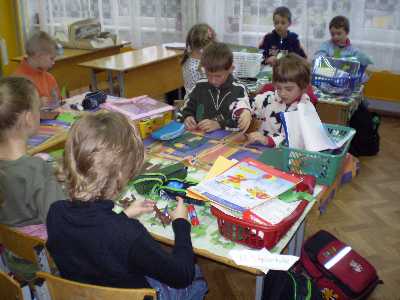

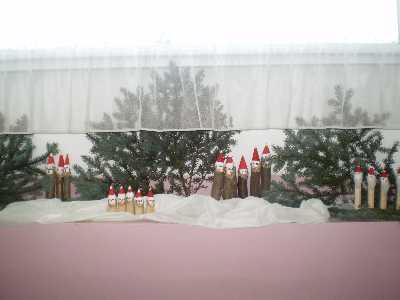
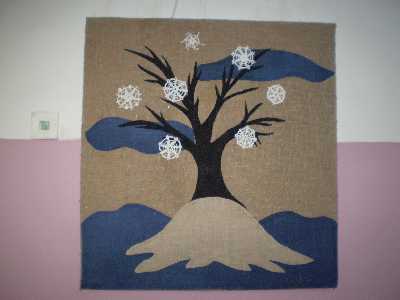

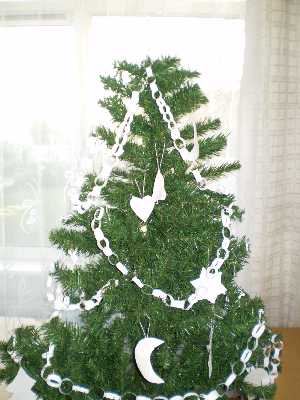
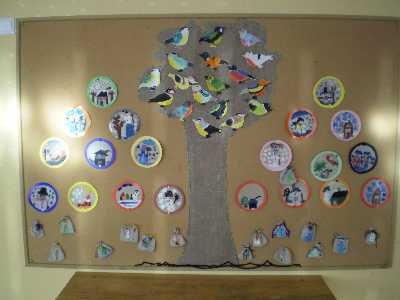

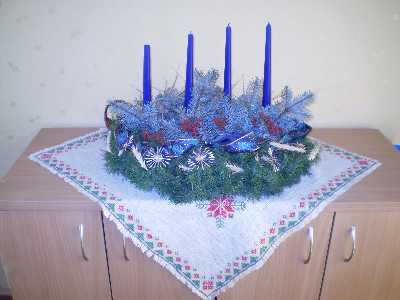


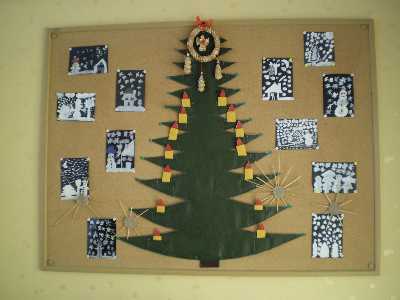
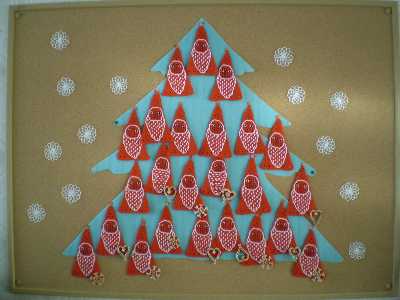
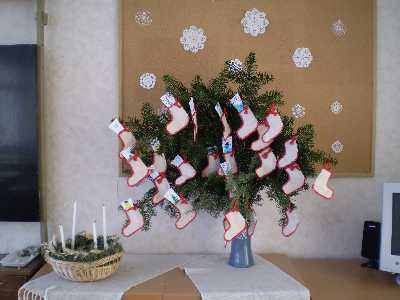
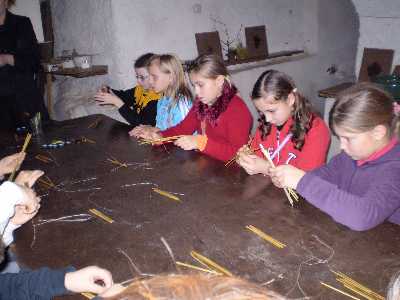
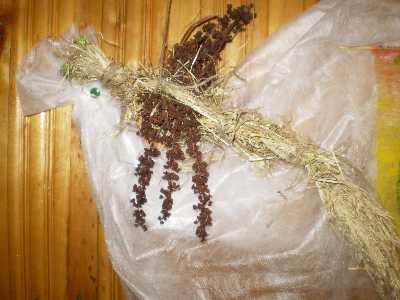





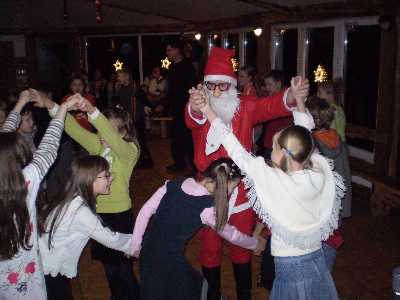
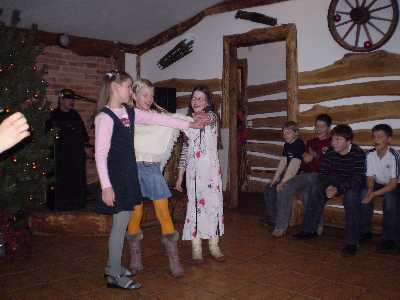

 Kaledu Senelis apsilanke ir mokykloje -
The Santa Claus visited at school
Kaledu Senelis apsilanke ir mokykloje -
The Santa Claus visited at school